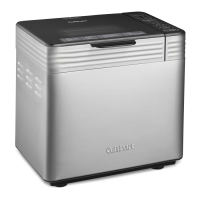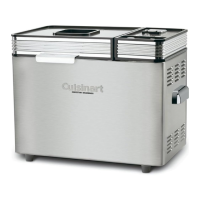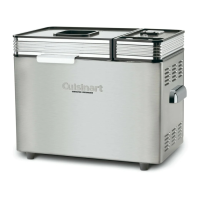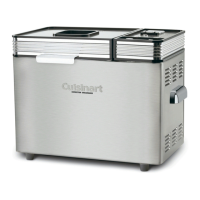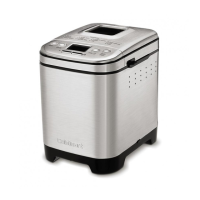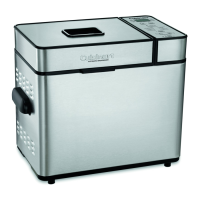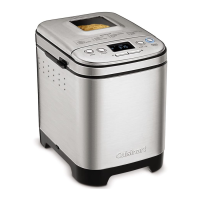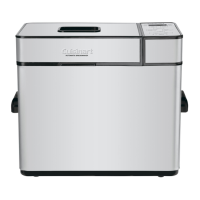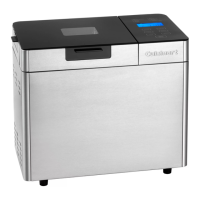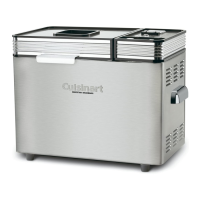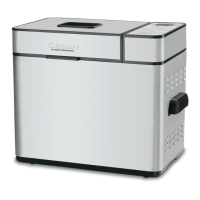18 19
QUESTION ANSWER
Why did my dough/bread not rise well?
There are a number of factors that could result in a short rise. Be sure that the yeast is fresh and that all ingredients are room temperature (75ºF to 90°F
[24°C to 32°C]). If the liquids are too warm or too cold, they will not activate the yeast properly. Be sure the ingredients are put into the baking pan in the
correct order. Note that not all breads rise as much as others. Whole-wheat or whole-grain breads tend to be shorter than white breads. Also, breads with
more sugar or sweeteners, and ones that are enriched with eggs, will be taller than regular white breads.
Why is my bread sunken/uneven on
the top?
Humidity and room temperature can greatly affect the results of baked yeast breads. Keep the bread maker away from direct sunlight. If the humidity is
especially high, add an additional teaspoon per cup of flour used in the recipe.
Why does my yeast bread have an
underbaked/gummy texture?
The dough was too wet or possibly does not have enough white flour for gluten development. Add a bit more flour, 1 tablespoon (15 ml) per cup (250 ml),
or reduce the amount of whole-wheat/grain flours in the recipe and substitute white flour.
Why does the interior of my yeast bread
have excessive holes?
This happens if either the bread is too wet or if too much yeast was used. Double-check the recipe and, if necessary, make changes by either adding
a small amount of flour or reducing the yeast slightly.
Why is my yeast bread heavy and dense?
This could be one of a few different issues. The mixture may be too dry as a result of not enough liquid or because lower fat substitutes were used.
Another reason may be not using enough yeast. If this is occurring in whole-wheat/grain bread, you may need to use vital wheat gluten to help with the
structure of the finished bread.
Why are the corners/edges of the bread
full of extra flour/not evenly mixed?
Sometimes ingredients stick to the corners of the pan, most commonly in the Cake or Gluten Free programs (both have more batter-like consistencies
than a dough). Check on the dough/batter during the first mixing/kneading cycle and pause to scrape down if necessary. Lightly coating the bread pan
with a flavourless vegetable oil will help to prevent this from happening as well. We do not recommend the use of canned nonstick cooking sprays, which
can cause damage to the coating of the baking pan and paddle over time.
How do I get the kneading paddle out of
the loaf?
There are two options. In most programs you can remove the paddle after you hear the Remove Paddle signal (prior to the final rise). If this is not an
option, or you were not present to remove it, wait until the bread is cooled and then, carefully take out the paddle (use caution because it may be hot).
Why is the unit smoking/producing a
burning smell?
Most likely this is from ingredients that fell into the bottom of the bread machine or onto the heating element. If it is excessive, unplug the unit and once
cool, clean the interior of the unit. Plug the unit back in and resume the program (the program will be stored in memory for a maximum of 15 minutes).
In most cases, the smoke/odour will be minimal and it will dissipate.
TROUBLESHOOTING
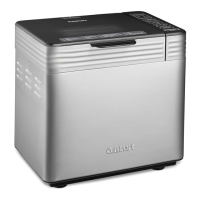
